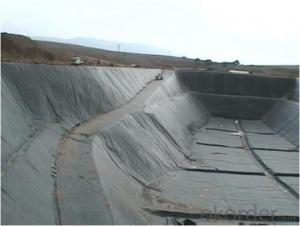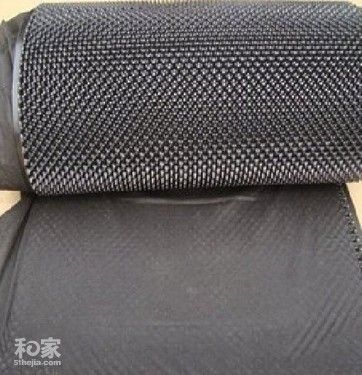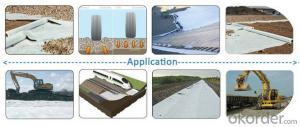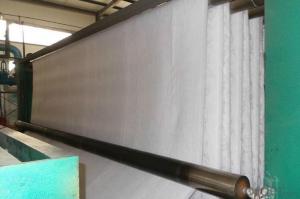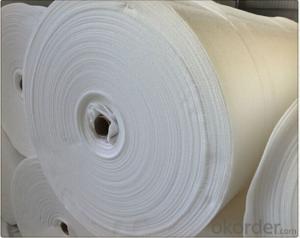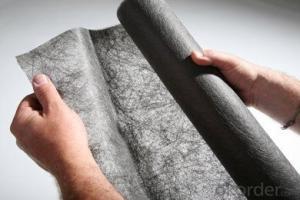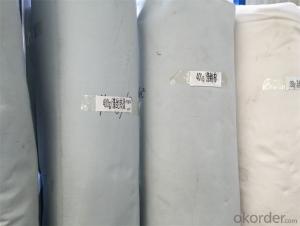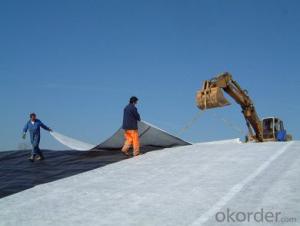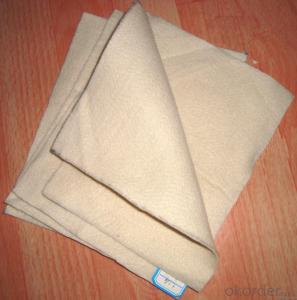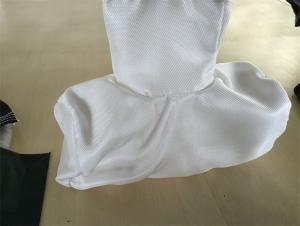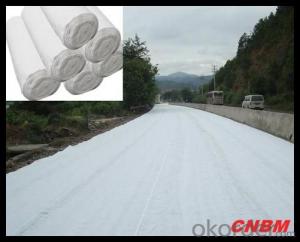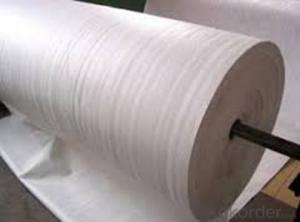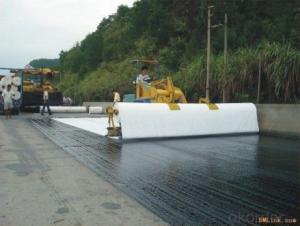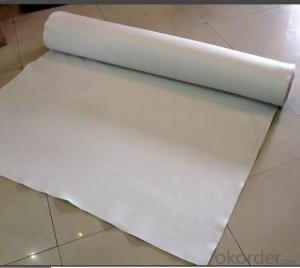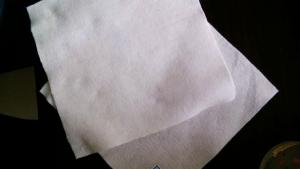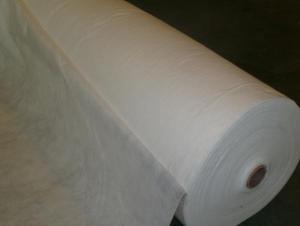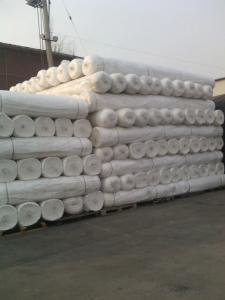Geotextile Fabric for Landscaping - Nonwoven Geotextile for Construction & Real Estate
- Loading Port:
- Tianjin
- Payment Terms:
- TT OR LC
- Min Order Qty:
- 5000 g/m²
- Supply Capability:
- 10000 g/m²/month
OKorder Service Pledge
OKorder Financial Service
You Might Also Like
Packaging & Delivery
| Packaging Detail: | packing with customer requests |
| Delivery Detail: | after we have received you payment |
Specifications
Biaxial geogrid:
1)Raw material: Polyproplene;
2)Width: 1.6~2.5m;
3)High Tensile strength

The mateiral of biaxial tension plastic geogrid is similar with the material of unidirectional tension plastic geogrid. Its chemical property isn't active also. It is extruded by macromolecule polymers, and formed by longitudinal and horizontal tension. This kind of material has high tension strength in both longitudinal and horizontal directions. This kind of structure provides a interlock system for the soil.

| Item | TGSG15 | TGSG20 | TGSG30 | TGSG40 | TGSG45 |
| Longitudinal tensile yield strength per long meter | 15 | 20 | 30 | 40 | 45 |
| Horizontal tensile yield strength per long meter | 15 | 20 | 30 | 40 | 45 |
| longitudinal yield elongation rate | 13 | ||||
| Horizontal yield elongation rate | 16 | ||||
| longitudinal resistance to 2%of deformation | 5 | 8 | 11 | 13 | 16 |
| Horizontal resistance to 5%of deformation | 7 | 10 | 13 | 15 | 20 |
| longitudinal resistance to5%of deformation | 8 | 10 | 15 | 16 | 25 |
| Horizontal resistance to 5%of deformation | 10 | 13 | 15 | 20 | 22 |

(1) Road surface reinforcement of road,railway and airport road;
(2)Maintenance,reconstruction and widening of old road surface(asphaltum road or cement concrete road).
(3)Reinforcement of soft soil roadbed,irrigation channels and water dam.
A. Filtration
The filtration layer of the dykes, river canal, seacoast, concrete slope, retaining walls.
At the same time of preventing the clay granule from passing, it allows the water and the gas pass through freely.
B. Separations:
The isolation of the railway dregs and the roadbed, roadbed and the soft base, different dam materials.
It isolates the soil and the gravel of two kinds different granule pathway from the groundsill or other buildings.
C. Adding muscle:
The highway, railway of retaining wall, slope protection, etc in which distributes the earth stress,
prevents the side-displacement of the earth body and improves the earth body stability.
D. Protections
It prevents the bank from being washed out, protects the bank and the bottom,
prevents the water and soil from being washed away.
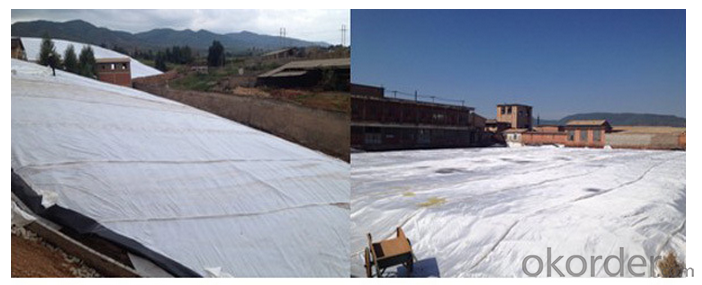
FAQ:
♦ Payment terms: by T/T or L/C |
♦ MOQ:2000 SQM |
♦ If you are interested in our products ,pls advice me the technical index,product weight etc,the more information the better..... |
- Q: How do geotextiles help with soil reinforcement in pavement systems?
- Geotextiles provide soil reinforcement in pavement systems by acting as a barrier between different layers of soil, preventing their intermixing and maintaining the stability of the pavement. They distribute the load more evenly, reducing the potential for soil settlement and rutting. Additionally, geotextiles enhance the overall strength and durability of the pavement system by providing tensile strength and preventing the migration of fine particles, ultimately improving the performance and lifespan of the pavement.
- Q: What are the different geotextile testing methods?
- There are several different geotextile testing methods, including but not limited to, grab tensile strength test, puncture test, tear strength test, bursting strength test, and water permeability test. These tests help determine the physical properties and performance characteristics of geotextiles for various applications in civil engineering and construction projects.
- Q: Polypropylene geotextile and polyester geotextile with the naked eye how to distinguish
- Polypropylene compared to white, polypropylene fiber than polyester fiber density point, anti-aging anti-aging of polypropylene, polyester aging,
- Q: Road Central isolation belt (5 m wide) Drainage No design Waterproof geotextile laying and gravel blind ditch, are design flaws?
- Should be it, the general design will have this. If you need to contact me, see the information
- Q: What are the key factors to consider when selecting a geotextile?
- The key factors to consider when selecting a geotextile are the intended application, the type and characteristics of the soil, the required strength and durability, and the desired drainage and filtration properties. Additionally, factors like installation methods, project budget, and environmental considerations should also be taken into account.
- Q: How do geotextiles help in reducing the risk of soil liquefaction?
- Geotextiles help in reducing the risk of soil liquefaction by improving the stability and strength of the soil. They act as a barrier between the soil particles, preventing them from shifting and settling during seismic events. Additionally, geotextiles enhance the drainage properties of soil, allowing excess water to flow through and reducing the buildup of pore water pressure, which is a major cause of soil liquefaction.
- Q: Composite geotextile 20-500-0.5 what it means
- 0.5 should be the film thickness of 20-500. Did not understand the estimated cloth is the bar, not like
- Q: How do geotextiles enhance the performance of geocells?
- Geotextiles enhance the performance of geocells by acting as a separation and filtration layer between the soil or aggregate fill and the geocell walls. They prevent the migration of fine particles into the geocell structure, improving its overall stability and load-bearing capacity. Geotextiles also provide reinforcement and confinement to the infill material, minimizing lateral spreading and improving the geocell's structural integrity.
- Q: Water stable health with the geotextile, sticky on the water stable, how quickly cleared
- I professional production geomembrane / geotextile, the highest cost, I wish smooth
- Q: Such as title. The manager asked them to be made into a square meter compound. What materials can be used to bind them live. 502 glue can not be filled Cao Cao 丨 not only check the intestine Lu adhesive can not be used, glue rods can be used, but EVA is transparent after the appearance of poor adhesion. Neighborhoods. More
- EVA has a special bonding material ah vendors did not tell you?
Send your message to us
Geotextile Fabric for Landscaping - Nonwoven Geotextile for Construction & Real Estate
- Loading Port:
- Tianjin
- Payment Terms:
- TT OR LC
- Min Order Qty:
- 5000 g/m²
- Supply Capability:
- 10000 g/m²/month
OKorder Service Pledge
OKorder Financial Service
Similar products
Hot products
Hot Searches
Related keywords
